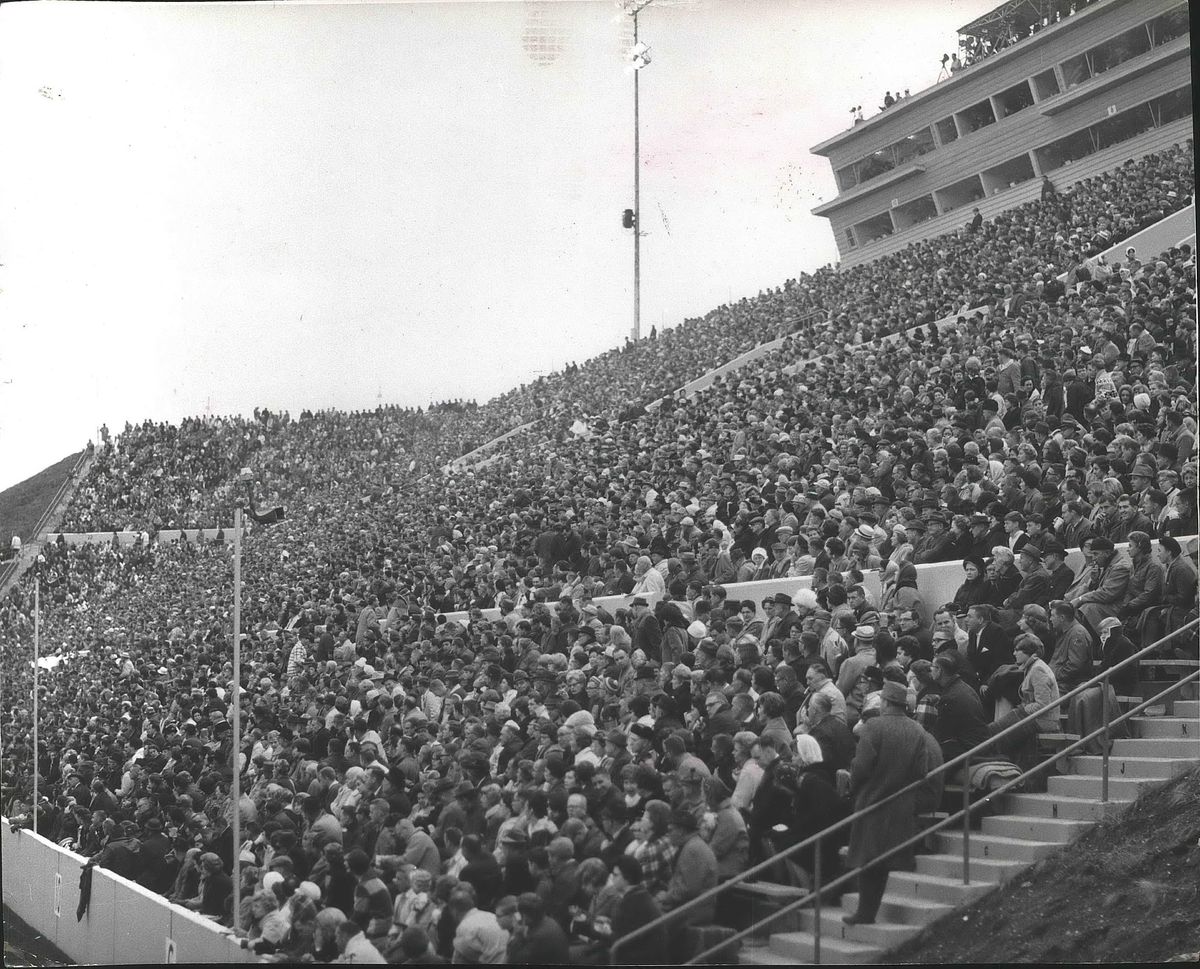This column reflects the opinion of the writer. Learn about the differences between a news story and an opinion column.
Shawn Vestal: Don’t get hung up on stadium in plan to improve schools

For something that hasn’t even been built yet – something that hasn’t even been put on the ballot for voters to approve yet – the downtown sports stadium casts a large shadow.
The problem is that the most exciting, vital pieces of a massive city-school bond proposal lie right under that shadow: New schools. New libraries. New playfields and park spaces. Renovations and expansions all over town. An ingenious series of collaborations that capitalizes on shared resources between two local governments.
It would be a shame if the downtown stadium idea fouled up any of that – sucked up too much attention or became a focal point for critics – because it represents about 6 percent of more than $600 million in planned projects. So it’s good news that city and school officials are separating the stadium proposal from the rest of the package.
The City Council and the School Board are holding a joint meeting this week to consider putting bond proposals on the ballot in November. It’s a partnership the likes of which we haven’t seen, leveraging property tax savings from the Legislature’s strategy boosting education funding, and it’s brilliant in many ways.
It’s also very hard to truly grasp it all. The more public officials can do to help voters understand and separate the moving parts, and to establish a sense that there will be rigorous accountability moving forward, the better people will feel about voting for it.
The initial plan was for voters to face two separate propositions – one from the school district and one from the city. Now, officials are looking at adding a third, separate proposition that would include the stadium work.
That makes sense, and not because there’s anything wrong with the stadium/sports complex idea. It’s because that part of this – minor league soccer team or not – should fall at the bottom of this priority list.
If these proposals make it onto the ballot and we choose to do it all, so be it. But the stadium shouldn’t sink the rest of it.
This all started with the state Supreme Court. In 2012, the court ordered the Legislature to step up its education funding in a ruling known as the McCleary decision. The Legislature’s eventual response in the last session has a couple of clear, immediate results: a drop in local property taxes, and a requirement for smaller classrooms.
That means we need more classrooms, which means we need more schools.
The McCleary fix also shifts school funding away from local levies and back to the state. The implementation of that change resulted in a one-time property tax hike this year. Next year and going forward, residents in the Spokane School District will see a drop of $2.20 per $1,000 in local property taxes (the state portion will rise, but property owners should see a drop overall).
The city and school district are proposing that voters essentially reinvest half of the local property tax savings.
Meanwhile, as the school district scouts around for places to put new schools, the city has a bunch of unused or little-used land – its “non-performing properties and assets.”
The bond proposals would put two new schools on that city land – a middle school near Mullan Elementary and one on city land in northeast Spokane.
This is one of very, very many examples of collaboration in this package, but it’s illustrative of the way the city and schools are looking for ways to work together, save money and expand services.
It would replace libraries in Hillyard and East Central, and expand other libraries in dramatic ways, at a time of rapid growth in library use. It would build three new middle schools and three replacement middle schools. It would add recreational facilities for all city residents.
And it would provide options to replace Joe Albi stadium – with either a new field on the same spot or a downtown stadium next to the Arena.
The entire proposal is built upon the idea that breaking down the separation between the city and school is a wise use of tax money.
“It’s all the citizens’ money,” said Rick Romero, whose record of creatively rethinking government projects has been a highlight of the Condon administration.
Romero and Mark Anderson, the associate superintendent of schools, were the primary minds behind the project, and they have come up with a very ambitious proposal, one that touches seemingly every aspect of the services that these two governments provide to citizens.
It’s a lot to take in – a lot of money, a lot of projects, a lot of details. Is it too much for something that needs to attract voter support?
“Once you explain it to voters, it really makes sense,” Anderson said. “You’re going to get a $2.20 tax drop next year. How about investing half of that in schools, libraries, parks and recreational facilities?”
